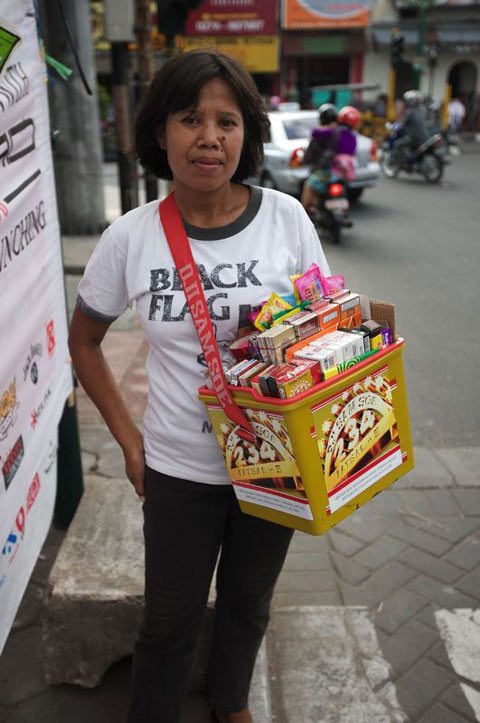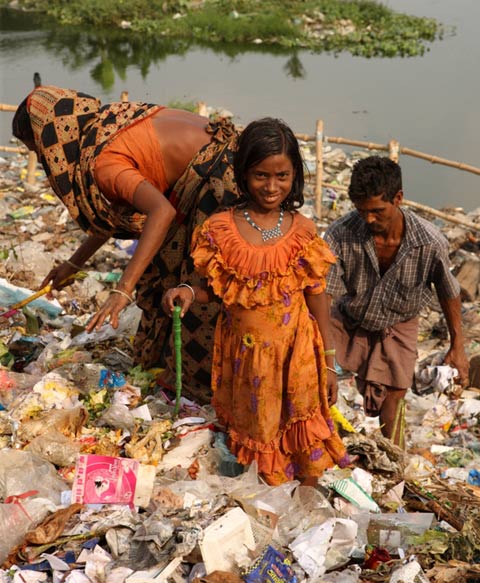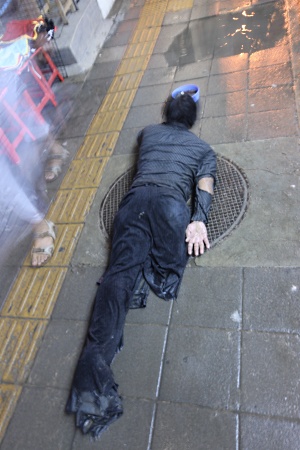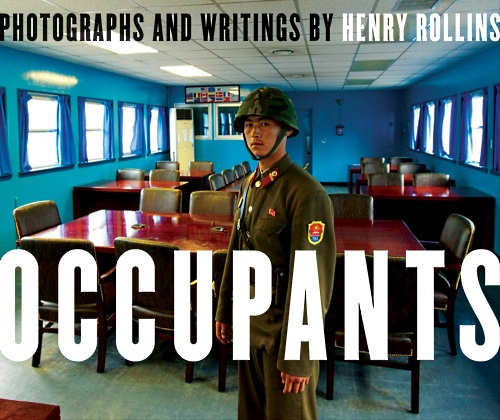 Dweez may embed impersonations of the authors discussed within each post.
Dweez may embed impersonations of the authors discussed within each post.
I lived in Spain, Brazil, and China during the last decade. I spent nights in Maputo and Malmö camped on stranger’s couches. I rode buses to Bahia and Bordeaux crunched between uncouth passengers. I visited the Khmer Rouge torture chambers in Cambodia and saw the human furnaces outside of Berlin. I did what was expected and snapped photos all along the uncomfortable way.
Never in ten years of travel, did I manage to marry those captured images with the palpable despair that certain places made me feel. I tried to put a lid on it. Reflect here and there and move on. Return and recollect the happy moments. Remember the good stuff.
I was six-months old when Black Flag played their last real show in 1986. Not every former punk band front man still matters. Henry Rollins does. Whether in his L.A. Weekly column, his other other bands, or on KCRW’s radio waves, the Black Flag bearer persists. He keeps going. Part of that continuation involves his own relationship with comfort. He hates it. So do I.
In February, I perused the L.A. Art Book Fair in Downtown and L.A. Zine Fest in Culver City. Furniture stores are going to need to produce stronger coffee tables for the piles of art and photo books being printed. The zine market is exploding, check the back of any indie bookstore. Both events were loaded with books trying the text-and-visual tango.
But none of the books I flipped through quite had the same impact that Henry Rollins achieved in his 2011 Chicago Review Press book Occupants. This is photography and writing as teamwork, not novelty. Starting in Kyrgyzstan during 2003 and ending with Mali in 2010, it’s seven years of Henry Rollins at his best.
What Works:
Rollins is accurate in his About-The-Book assumption that it would be pretentious to release a book of only travel photographs — especially when the trips are primarily to the underbelly of the developing world. For good reason, Rollins paired each image with a text block.
These paragraphs aren’t merely creative captions, but they’re not quite short stories either. They’re inconsistent in tense, narrator, and tone. He switches between the first, second, and third person. He lets his feelings for each photo dictate the length. His words are unified only in their Rollinsness: punchy, pungent writing that reads the way a hammer pounds.
“Humanity is a dog that has been biting at a flea on its rear leg for so long it doesn’t know what the initial cause of the discomfort was. Eventually the dog chews itself to pieces and declares victory.”
“Overdraw, foreclose, die.”
“Humanity is a whiplash. Your life depends on which side of the whip you’re on.”
“Hopefully the advice is to go to a clinic and get ARV treatment, because jumping up and down or trying to lick the moon just isn’t going to cut it.”
There’s room for humor and irony too. During a trip to Java’s culture capital, Yogyakarta, he includes a photo of a woman wearing a Black Flag T-shirt and another of a man selling them. Along with the most poignant take on bootlegging I’ve ever read. Rollins also provides factoids about this encounter in the back of the book.
“I tried to explain to him the relevance of the T-shirt, but, like the woman wearing the T-Shirt, it seemed to have no meaning.”
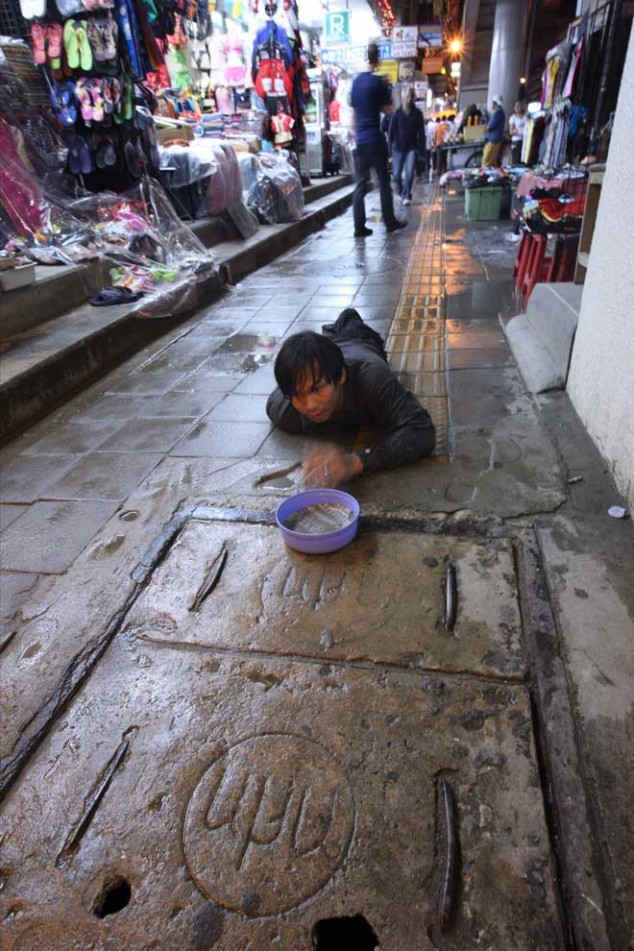 There are times that Occupants operates capital-J, Journalistically. There was a poisonous gas leak in India in 1984. The Bhopal 2009 section gives context and photos of the twenty-fifth anniversary of the leak. Despite the leak killing thousands of locals, two corporate entities (Union Carbide India Limited and Dow Chemical) got off the hook without a shred of the flack that BP took for an oil spill that primarily threatened wildlife.
There are times that Occupants operates capital-J, Journalistically. There was a poisonous gas leak in India in 1984. The Bhopal 2009 section gives context and photos of the twenty-fifth anniversary of the leak. Despite the leak killing thousands of locals, two corporate entities (Union Carbide India Limited and Dow Chemical) got off the hook without a shred of the flack that BP took for an oil spill that primarily threatened wildlife.
The most successful photo/text combo comes from the Thailand section, where Rollins lived for a short time. He includes back-to-back photos of a begging amputee, scooting along the cement during a monsoon.
“I must admit to you that I am often frustrated that I am unable to do more for others. The world has so many people, there is no need for loneliness or sadness. That’s why there are so many people, so no one will be lonely or sad. I am hopeful.”
How Rollins gave the most hopeless character among the nearly 100 photos the most profoundly optimistic mindset is exemplary of the power the text/photo form can possess. The pairing rises and then transcends the occasion. The text and the photo mutually enhance each other. They are greater than the sum of their parts.
What Doesn’t:
I occasionally found myself flipping to the caption section in the back of the book to find more geographic specifics about a photo. One caption, for photo taken in Israel, reads:
“This is the thing you do when the burden of peaceful coexistence is too much of a pain in the ass. This is what children do in sandboxes before they learn to read. ‘I know, we’ll build a really long wall.’”
There is enough Rollinsness in the main text. It would be nice to simply discover where the photo was taken. Another caption for a bowing Ronald McDonald statute in Thailand: “I hope it burns to the ground.” It’s the intersection of unhelpful and anti-American where things get a little off the rails.
“Americans eat ‘good food’ and look like shit,” reads the text beside a Bangladesh girl smiling beautifully rummaging through a mountain of garbage with her parents. A few pages later, alongside a photo of a deformed man sitting in the street, Rollins muses about the future America, “The air smells of burning garbage, rotting food, and vehicle exhaust. South Carolina 2021.”
The nail under his hammer morphs into a screw and the couplets get tougher to fasten together. Suddenly there is an enemy in the chaos: himself. Rollins flirts with privilege guilt enough to encroach on the cliché.
The accompaniment for a stoop sans house in the 9th Ward post-Katrina, “Life does not exist. The blue blue sky says fuck fuck you. Don’t look. Eat shit polyunsaturatedsodiumniggerhydrate poison and die USA,” is enough. The photo of a couple carrying eighteen live ducks on a motorcycle in Saigon, “No need to learn history. No need to find out what your country does in other countries and try to put yourself in the place of others. There’s a danger there. Empathy,” gets a touch too patronizing. Too on the nose.
Maybe there is something about tearing yourself down to build yourself back up. It is knife twisting he’s going for after all. The side-effect is that the text sometimes overcooks the photo. Being uncomfortable is one thing, covering yourself in shit is something else entirely.
But Should You Read It?
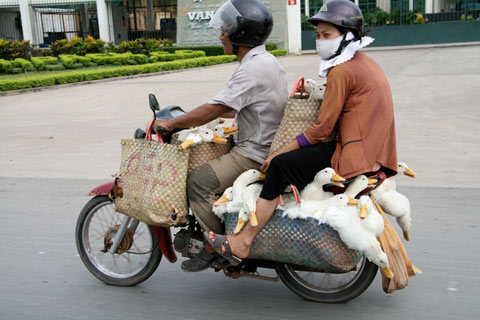
I guess you could ask the same question about whether or not you should get a passport. Actually no, you should get a fucking passport. America’s gotta crank up that 37% passport toting percentage. I suppose if you prefer the vacations, cruises, and bottle services of the world then maybe this book isn’t one you’re going to enjoy.
That begs another question: is enjoyment what we are really looking for when we read? When we travel? While we’re here?
Occupants is a book for coffee tables interested in showcasing more than gravitas or quirk or cool. It’s a book for anyone with international persuasions. It’s an upgrade to the dozens of photo exposés on seedy Americana/Globalcana in circulation in Zine and Art Book sections worldwide. Rollins lays the USA guilt on about as thick as it can go without puncturing the bread that holds the book together: the delicate symbiosis between word and image.
Occupants works wonders when it covers terrain you’ve been over yourself. You might have even noticed this lopsided, uncomfortable feeling crawling its way up your guts like a David Cronenberg animatronic. But if you’re like me, you might have chased it away in a more Anthony Bourdain fashion. A local beer. A local laugh. A better memory to take home.
It wasn’t until Occupants that my own Cambodia trip hit me full on. Rollins took extraordinary photos. There are kids squeezing peace-signs through a chain-link fence. There is a wooden torture table in a former school. A photo of human skulls decorating the Killing Fields of Cambodia spells it out: “I am more than you can handle.”
I saw the same table, the same kids, but I dodged the skulls because I knew how unsettling it could be. Instead of visiting the Killing Fields (and, on the other end of the spectrum, Angkor Wat) I did a story on a Long Beach Crip who started a local breakdance school. I looked to feel good about my time in a country that’s considered cursed. My own discomfort masochism went only as far as was convenient. The optimistic/pessimistic dichotomy doesn’t go far enough to explain that tendency. I guess it needs some kind of visual aid.
I encourage you to read Occupants while eating. Let it take the place of the childhood cereal box. Crunch your gluten-free granola. Squeeze your hot sauce over the extra avocado on your breakfast burrito. Drink your fair trade coffee. Let the text eject the photos from the page into your grill. When that discomfort hits, wherever that edge is for you, you’ll get why this book matters.
I dare you to read this entire book in one sitting. I dare you to read it and still have a Zen day. I dare you to read it and make a Zine about your Tinder dates. I dare you to read it and not think about it the next time someone stamps your passport in some other where. I dare you to read it and not feel some other type of way.
I dare you to read it and not have an answer for Henry Rollins:
“So what do you do? Stay local? Go global? Chain yourself to tradition and live in some ancestral echo?”

